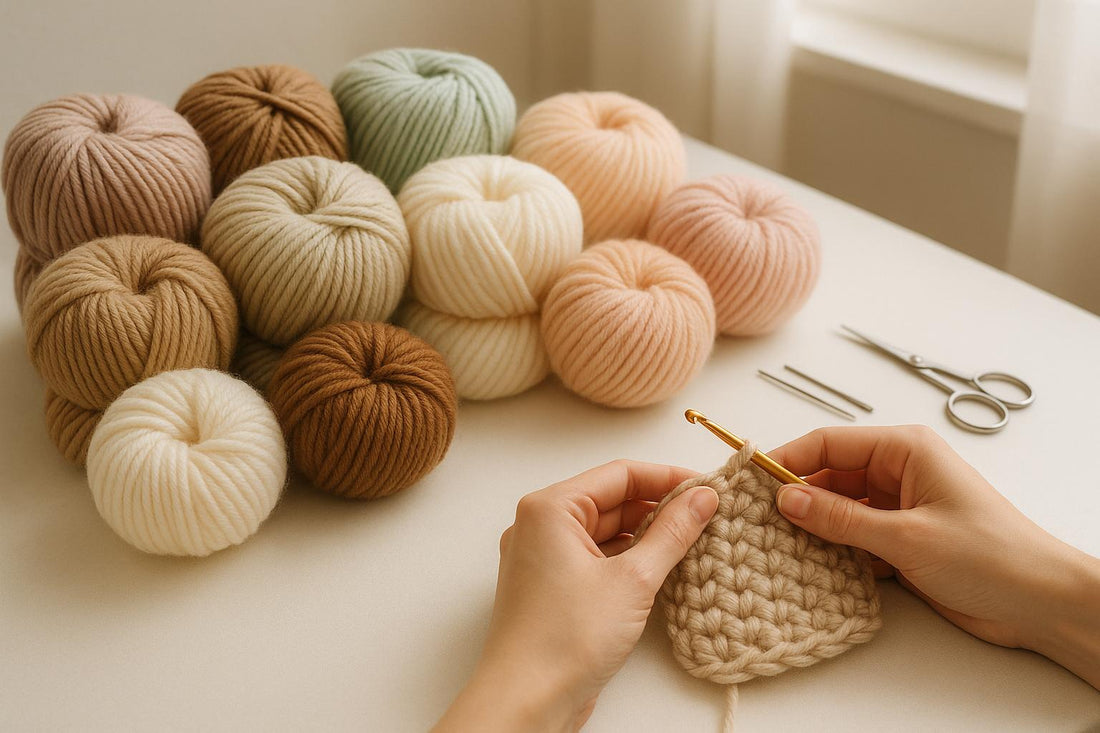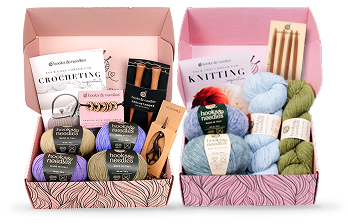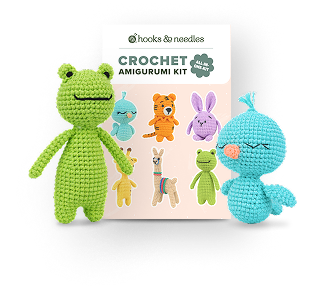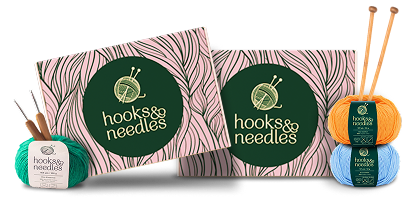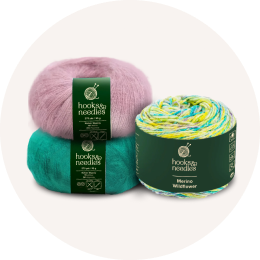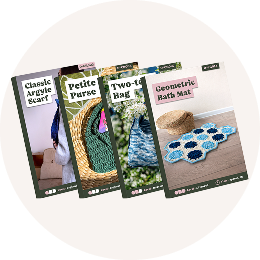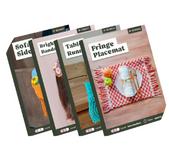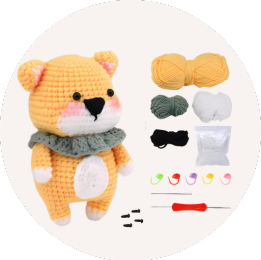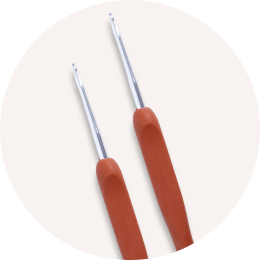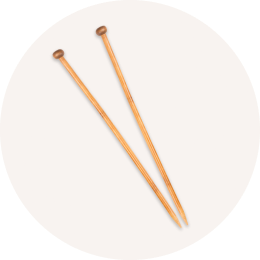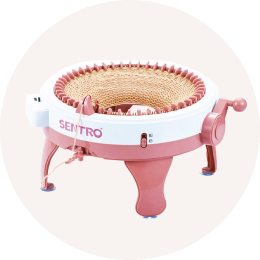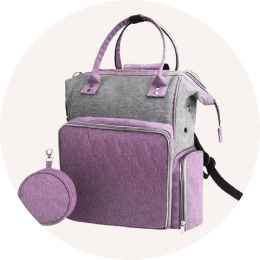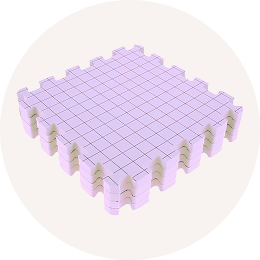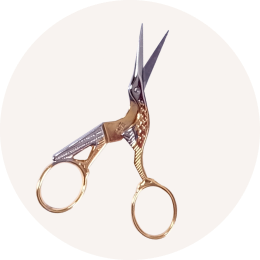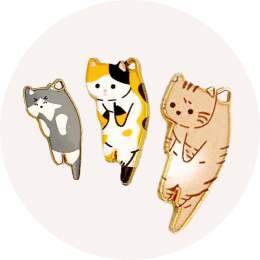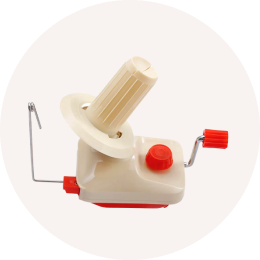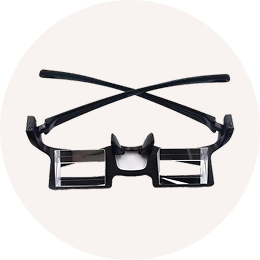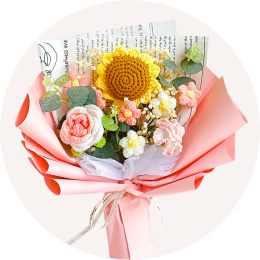Crafting isn’t just a hobby - it’s a simple way to improve your mood, reduce stress, and build confidence. Activities like knitting or crocheting engage your hands and mind, creating a calming rhythm that helps quiet your thoughts. Plus, finishing a project gives you a sense of accomplishment, and connecting with other crafters can add a social boost.
Here’s why crafting works:
- Stress relief: The repetitive motions of crafting act like meditation, helping to relax your mind.
- Mood improvement: Completing a project can lift your spirits and build self-esteem.
- Mental exercise: Crafting keeps your brain sharp by combining focus, creativity, and problem-solving.
- Social connection: Joining crafting groups (online or in-person) creates a sense of community.
Getting started is easy. All you need are a few basic tools like needles, yarn, and a simple pattern. Start small - projects like dishcloths or scarves are great for beginners. Track your progress, celebrate your successes, and enjoy the calming benefits of crafting.
The Surprising Mental Health Benefits of Crafting
The Science Behind Crafting and Mental Health
Handmade crafts like knitting and crocheting offer more than just a creative outlet - they provide a calming, focused experience that many find therapeutic. While crafters often report feeling more relaxed and uplifted after a session, scientific studies on the biological or cognitive effects of crafting are still emerging. Here's a closer look at how these activities may support mental well-being.
How Crafting May Help Reduce Stress and Anxiety
The repetitive motions involved in crafting, such as stitching or knitting, work much like mindfulness practices. Concentrating on these steady, rhythmic actions can help quiet racing thoughts, creating a sense of calm. While comprehensive research is limited, the soothing nature of these routines has been shown to help ease tension and promote relaxation.
Mood Boost and Sense of Achievement
There’s something deeply satisfying about finishing a craft project. Whether it’s mastering a tricky stitch or completing a handmade piece, these small victories can lift your mood and provide a sense of accomplishment. On top of that, crafting often brings people together. Sharing your work or joining a crafting group can add a layer of social connection, which is known to enhance overall well-being.
Mental Stimulation and Creative Thinking
Crafting is more than just hands-on work - it engages the brain in meaningful ways. Tasks like following patterns, coordinating fine motor skills, and problem-solving tap into both concentration and creativity. These activities not only serve as a creative outlet but also act as mental exercises, keeping the mind sharp. While research in this area is still developing, the mental stimulation from crafting complements the emotional benefits, making it a well-rounded activity for boosting happiness and mental agility.
Emotional and Mental Rewards of Crafting
Crafting offers more than just a creative outlet - it provides a powerful way to process and manage emotions. Turning feelings into something tangible can be incredibly cathartic, helping to make even the most overwhelming emotions feel more manageable. During tough times, it acts as a temporary escape, giving your mind a much-needed break. Engaging deeply in crafting often leads to a "flow state", where stress begins to melt away as you focus entirely on the task at hand. This process not only sparks imagination but also promotes relaxation, offering a healthy and uplifting way to regulate your emotions. Over time, these emotional benefits can contribute to a more positive and enduring sense of well-being.
Building Self-Esteem Through Finished Projects
Building Social Connections
sbb-itb-f7119e8
Getting Started: Tools, Materials, and Beginner Tips
Embarking on your crafting journey doesn’t require a huge investment or advanced skills. The secret lies in starting with the right tools and materials to set yourself up for success while avoiding unnecessary frustration. Skip the temptation to buy everything in sight or tackle overly complex projects right out of the gate.
Choose quality over quantity when assembling your first toolkit. You can always add more as your skills grow and your interests evolve. Taking these thoughtful steps makes crafting more enjoyable and helps you experience the calming benefits it offers.
Let’s dive into the essentials you’ll need to get started.
Basic Tools and Materials for Beginners
To begin, stick with the basics: a set of commonly used hooks or needles, beginner-friendly yarn, stitch markers, scissors, a tape measure, and a yarn needle. Aluminum or bamboo hooks and needles are ideal for beginners - they’re smooth, durable, and help yarn glide effortlessly, keeping hand fatigue to a minimum during longer sessions.
When it comes to yarn, medium-weight (worsted weight) yarn in light colors is a great choice. Lighter colors make it easier to see your stitches, and the medium weight is forgiving and works up quickly. Acrylic yarn is perfect for starters - it’s affordable, easy to wash, and comes in a wide range of colors. Cotton yarn is another solid option, particularly for practical projects like dishcloths or lightweight summer items.
If you’re unsure about what to buy, Hooks & Needles subscription boxes can be a great solution. These curated boxes deliver high-quality European yarns, professional tools, and exclusive patterns tailored to your skill level. It’s a stress-free way to get started without feeling overwhelmed in the craft store.
Lastly, invest in a small project bag to keep your tools and materials organized and portable. This makes it easy to craft wherever inspiration strikes.
Choosing the Right First Project
Once your toolkit is ready, pick a beginner-friendly project to build your confidence and reinforce your new skills.
Start with something simple and practical, like dishcloths or coasters. These quick projects can be finished in just a few hours, giving you that satisfying sense of accomplishment early on. Plus, they’re great for practicing basic stitches without too much pressure.
When you’re ready to move on, try making a scarf. Scarves are essentially long rectangles, so they’re perfect for practicing consistent tension and stitch count. Stick to a simple stitch pattern throughout the project to keep things manageable.
Hold off on tackling more advanced projects like sweaters, blankets, or fitted garments for now. These require a deeper understanding of techniques like gauge, sizing, and construction, which you’ll develop with experience.
Setting Up a Crafting Routine
With your first project in hand, it’s time to establish a routine that helps you stay consistent and make steady progress.
Crafting regularly - just 15-20 minutes a day - can build your skills faster than sporadic, lengthy sessions. Try linking your crafting time to an existing routine, like watching your favorite show or listening to a podcast.
Set up a dedicated crafting space that’s organized and well-lit. Bright lighting is essential to reduce eye strain, especially when working with detailed stitches or darker yarns. Keep your tools and materials within easy reach to make crafting sessions more seamless.
Set realistic goals that fit your lifestyle. If you’re busy, aim to complete one small project per month instead of juggling multiple ambitious ones that might end up unfinished. Document your progress with photos or a simple journal to see how far you’ve come - it’s a great motivator.
For extra inspiration and support, consider joining online crafting communities or local groups. Sharing your journey with others can keep you motivated, and experienced crafters often have helpful tips and advice. Many find that crafting is even more enjoyable when it’s a shared experience.
Finally, don’t overlook the importance of comfort. Keep your crafting space at a comfortable temperature - around 68-72°F - and have a water bottle nearby to stay hydrated, especially during longer sessions. Small details like these can make a big difference in your overall experience.
Measuring the Impact of Crafting on Happiness
Once you’ve settled into a crafting routine, keeping track of your mood can help you see just how much crafting contributes to your mental and emotional well-being. Many crafters notice positive changes over time, and documenting these shifts not only highlights the benefits but also makes the entire process more rewarding. Let’s dive into some practical ways to measure and celebrate these improvements.
Consistent tracking can make subtle changes in your mental health and happiness more noticeable, offering a clear picture of how crafting influences your life over time.
Tracking Emotional and Mental Health Benefits
One of the easiest ways to start is with a mood journal. Before and after each crafting session, jot down how you’re feeling. Rate your stress, anxiety, and overall mood on a scale of 1 to 10. Crafting has a way of lifting spirits, and seeing those numbers change can be a great motivator.
Keep an eye on your sleep quality too. Many crafters report falling asleep faster and waking up feeling more refreshed after incorporating crafting into their daily lives. Note details like what time you went to bed, how long it took to fall asleep, and how you felt the next morning. Over time, these observations can reveal patterns you might not have noticed otherwise.
Don’t forget about physical symptoms. Stress often manifests in the body - think headaches, muscle tension, or digestive issues. Regular crafting sessions can help ease these stress-related symptoms. As you track your progress, you might notice your hands feeling less tense or your shoulders relaxing during and after your projects.
Whether you use a smartphone app or a simple notebook, consistency is key. A quick check-in before and after crafting is all it takes to gather meaningful insights.
Take time for weekly reflections to spot broader trends. Ask yourself: Were you calmer, more patient, or less irritable this week? These observations, even if they’re not tied to numbers, are just as valuable in understanding the impact of crafting on your life.
Celebrating Progress and Accomplishments
Every finished project is worth celebrating, no matter how simple it may seem. Snap photos of your completed work and create a digital or physical album. Watching your collection of handmade items grow is a powerful reminder of your dedication and progress.
Set milestones to mark your achievements. Completing your first blanket, mastering a tricky stitch, or finishing a particularly challenging pattern are all moments worth acknowledging. Treat yourself to something special - maybe a new skein of yarn or a tool you’ve been wanting to try.
Track your skill development too. Keep notes about new techniques you’ve learned, challenges you’ve overcome, or moments when things just clicked. Looking back on these notes during difficult times can remind you of how far you’ve come and motivate you to keep going.
Share your successes with others who understand the effort behind them. Online crafting communities are a great place to connect with like-minded individuals who can cheer you on. Their encouragement can boost your confidence and make your accomplishments feel even more meaningful.
Another way to stay motivated is by tracking the time you invest in your craft. Add up the hours you spend each week and watch how they build over time. Seeing the dedication you’ve poured into something that brings you joy reinforces its importance in your life.
Create before-and-after comparisons by revisiting your early projects. Place them side by side with recent ones to see how much your skills have improved. The progress will be evident in the details, giving you the confidence to tackle even more ambitious patterns.
Finally, consider adding a gratitude section to your crafting journal. Reflect on what you enjoyed about each session - whether it was the calmness of the moment, the satisfaction of solving a tricky problem, or simply the soothing rhythm of your work. These reflections can deepen your connection to your craft and remind you of the joy it brings to your life.
Conclusion: Start Your Crafting Journey Today
Handmade crafts aren’t just a creative outlet - they’re a proven way to improve mental well-being and bring a sense of happiness. Studies show that repetitive motions, like those in knitting or crocheting, can boost serotonin levels, helping to ease anxiety. And countless crafters have shared how the simple act of creating with their hands has brought them peace and joy.
When you pick up your needles or hooks, you’re not just making something tangible - you’re creating moments of calm and focus. The soothing rhythm of each stitch can quiet a busy mind and promote relaxation. Over time, these small, mindful actions can build self-confidence as you complete projects and even connect you with a welcoming community of fellow makers.
Getting started is easy. All you need is a pair of needles, some beginner-friendly yarn, and a simple pattern. Whether you carve out a few minutes during your lunch break or dedicate an hour on the weekend, it’s the regular practice that makes a difference.
As you dive into crafting, take note of how it impacts your daily life - better sleep, lower stress, and an overall sense of well-being often come faster than expected. Many crafters are amazed at how quickly these benefits start to show.
To make your journey even more enjoyable, consider investing in quality tools and materials. Hooks & Needles offers curated boxes that include everything you need to get started - luxurious European yarns that glide effortlessly through your fingers and exclusive patterns designed for all skill levels. With the right tools and a touch of inspiration, you’ll be creating pieces that are both beautiful and meaningful.
So, why wait? Grab your needles or hook, and let each stitch bring a little more calm, focus, and joy into your life. With every project you complete, you’ll see just how much crafting can positively shape your days.
FAQs
How does crafting help reduce stress and improve mental well-being compared to other mindfulness practices?
Crafting activities such as knitting and crocheting are fantastic ways to ease stress and boost mental health. The rhythmic movements and concentration they demand can have a soothing effect, much like meditation, helping to reduce cortisol - the hormone associated with stress.
On top of that, crafting often brings about a flow state. This is that magical feeling when you're so engrossed in what you're doing that time seems to fly by, leaving you calm and rejuvenated. Unlike many mindfulness techniques, crafting also gives you something to show for your efforts - a finished piece that brings a sense of pride and happiness.
What are some easy crafting projects for beginners that offer quick results?
If you're just beginning your crafting journey, starting with easy projects is a great way to gain confidence and enjoy the satisfaction of finishing something quickly. Consider creating personalized coasters from felt or cork, crafting fabric keychains with vibrant patterns, or designing beaded bracelets to play around with different styles. These projects are simple, enjoyable, and offer a rewarding introduction to the world of crafting!
What’s the best way to track how crafting improves my mental health over time?
Keeping tabs on how crafting affects your mental health can be as simple as starting a journal. Before and after each crafting session, jot down how you’re feeling - your mood, stress levels, and any sense of achievement. Over time, this can reveal patterns and shifts in your emotional state. If journaling isn’t your thing, a mood tracker can work just as well. These tools make it easier to link your crafting habits to improvements in your mental well-being, offering a clearer picture of its benefits.
